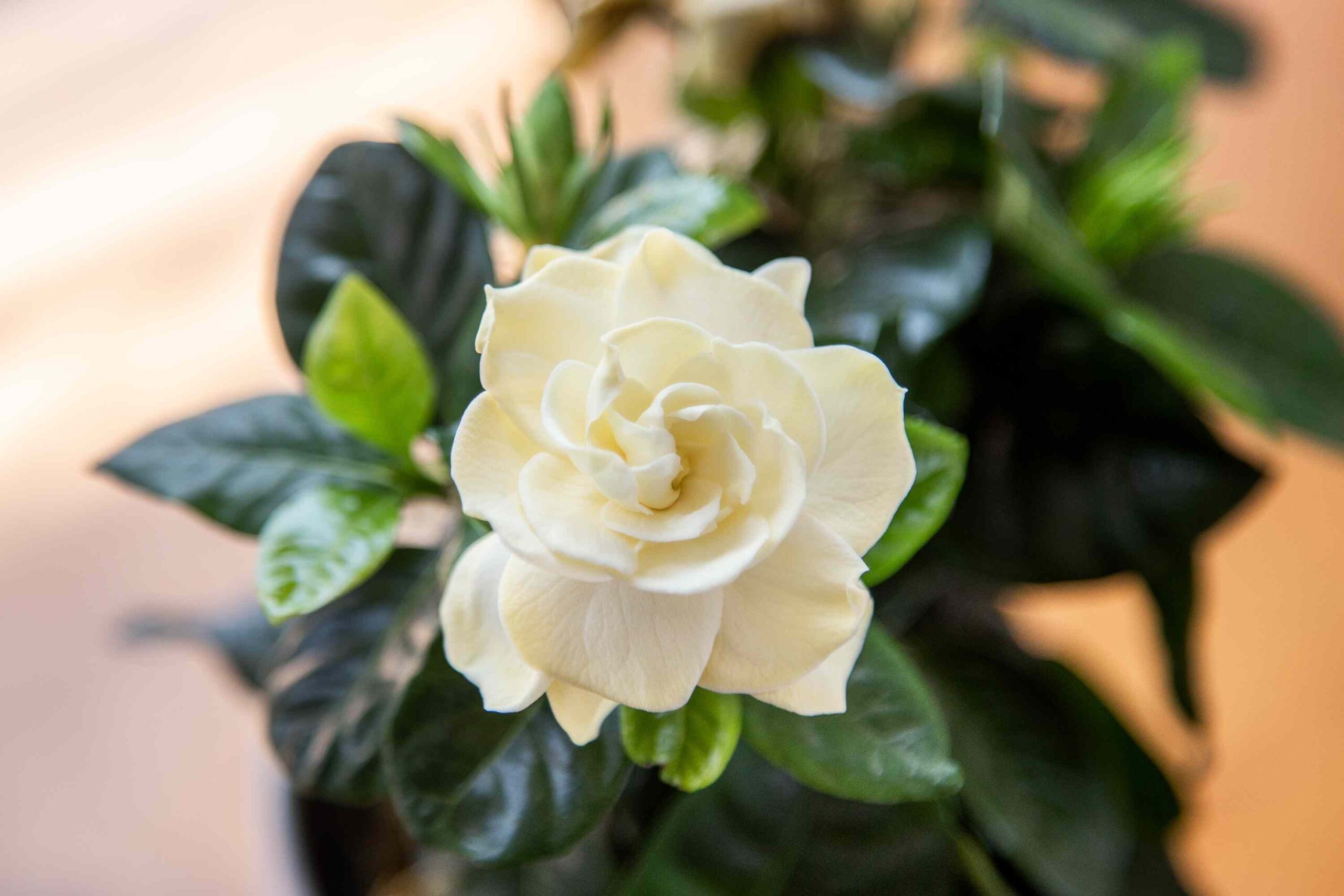If you are looking for a plant that adds beauty and fragrance to your garden, gardenias are a great choice. These evergreen shrubs are native to Asia and have shiny dark green leaves and large fragrant white flowers. In this blog post we will explain how to grow, sow and plant gardenias in your garden.
Growing gardenias

Before planting your gardenia, it is important to choose the right location. Gardenias prefer acidic soil with good drainage and partial shade. They can tolerate full sun, but are prone to burning leaves when exposed to too much heat. If you live in a colder climate, gardenias can be grown in containers and taken indoors during the winter Gardenias can be grown from seeds or propagated from cuttings. However, it is important to note that gardenias grown from seeds may not produce the same quality of flowers as the mother plant. If you choose to grow from seeds, start them indoors in early spring and keep them in a heat, humid environment until they germinate. Propagation by cuttings is the preferred method of most gardeners. Take a cut of a healthy gardenia plant in spring or summer. Remove the lower leaves and dip the cut into the rooting hormone. Plant the cut in a container with well-drained soil and keep it in a heat and humid environment until it establishes roots.
Planting and caring for gardenias
To plant gardenias, dig a hole two to three times wider than the root of your plant. Place the gardenia in the hole and fill with soil. Make sure that the plant is planted at the same depth as its previous container. Water the gardenia thoroughly after planting. To keep your gardenia healthy, it is important to regularly provide it with water and fertilizers. Gardenias prefer to be constantly moist, so be sure to water them deeply once a week or as needed. Use a fertilizer specially formulated for acidophilic plants and apply it in spring and summer. Prune your gardenia after it has finished flowering to remove any dead or health issued wood. Gardenias can also be pruned to maintain the desired shape or size.
Types of Gardenias

There are many varieties of gardenias, each with its own unique characteristics. The popularity of gardenia cultivars can vary depending on the region and individual preferences. However, some of the 5 most popular gardenias to grow are:
Veitchii-This cultivar is known for its double flowers and vigorous bearing. It blooms in after spring and early summer and has a strong, sweet scent.
secret: This cultivar produces large fragrant white flowers with matted petals. It blooms from mid to after spring and is a popular choice for its intense fragrance.
This low-growing cultivar is often used as ground cover or in hanging baskets. It produces small single sweet-smelling flowers and blooms from spring to autumn.
August Beauty cultivar is known for its shiny dark green foliage and large double flowers with a sweet scent. It blooms from after spring to early summer.
Kleim Hardy It produces small, simple sweet-smelling white flowers and blooms from after spring to early summer.
Pests and health issues of Gardenia
Gardenias are prone to various pests and health issues, which can affect their growth and overall health. Some of the most common pests and health issues that affect gardenias are:

- Whiteflies are small insects that feed on the leaves of gardenias, causing them to turn yellow and fall off prematurely. To prevent whiteflies, you can use insecticidal soap or neem oil spray
- Mealybugs: Mealybugs are another common pest that can infest gardenias. They leave a sticky residue on the leaves and stems and can cause growth retardation. To control scale insects, use a cotton swab dipped in alcohol to remove them from the plant.
- Mealybugs: mealybugs are another common gardenia pest that can cause yellowing and leaf fall. To check them, use a spray of horticultural oil or remove them manually with a soft brush.
- Root rot: gardenias are prone to root rot, which can be caused by excessive watering or poorly drained soil. To prevent root rot, make sure that the soil is well drained and water the gardenias only when the top inch of the soil is dry.
- Powdery mildew: powdery mildew is a fungal health issue that can cause a white, powdery layer on the leaves of gardenias. To avoid powdery mildew, make sure that the plants are in a place with good air circulation and avoid aerial watering.
- Leaf spot: Leaf spot is another fungal health issue that can cause dark spots on the leaves of gardenias. To avoid leaf stains, avoid watering in height and remove all infected leaves.




